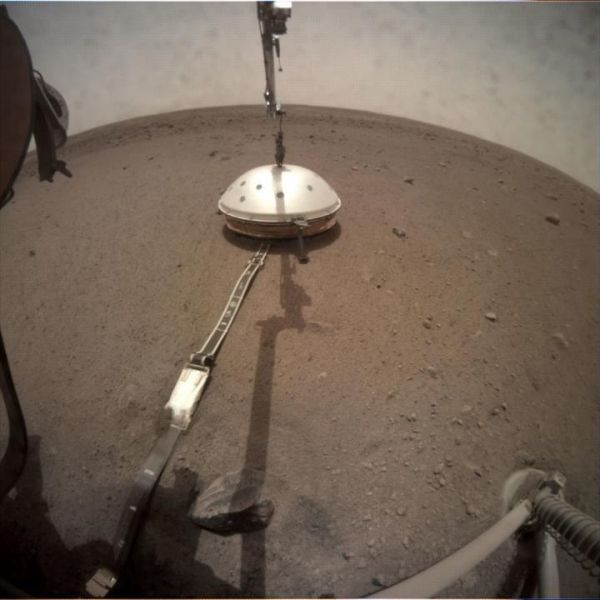The first reports of seismic activity and ground vibrations on Mars are in. The red planet has a moderate level of seismic activity, intermediate between Earth and the Moon.
An international team that includes University of Maryland geologists released preliminary results from the InSight mission, which landed a probe on Mars on November 26, 2018. Data from the mission’s Seismic Experiment for Interior Structure (SEIS) provided the first direct seismic measurements of the Martian subsurface and upper crust—the rocky outermost layer of the planet. The results were published in a special issue of the journal Nature Geoscience on February 24, 2020.
“This is the first mission focused on taking direct geophysical measurements of any planet besides Earth, and it’s given us our first real understanding of Mars’ interior structure and geological processes,” said Nicholas Schmerr, an assistant professor of geology at UMD and a co-author of the study. “These data are helping us understand how the planet works, its rate of seismicity, how active it is and where it’s active.”
The seismic data acquired over 235 Martian days showed 174 seismic events, or marsquakes. Of those, 150 were high-frequency events that produce ground shaking similar to that recorded on the Moon by the Apollo program. Their waveforms show that seismic waves bounce around as they travel through the heterogeneous and fractured Martian crust. The other 24 quakes observed by SEIS were predominantly low-frequency events. Three showed two distinct wave patterns similar to quakes on Earth caused by the movement of tectonic plates.
Read more at University of Maryland
Image: NASA's InSight lander deployed its seismometer on the Martian surface on Dec. 19, 2018. This image, captured on Feb. 2, 2019 (Martian Sol 66) by the deployment camera on the lander's robotic arm shows the protective wind and thermal shield which covers the seismometer. (Credit: Photo Credit: NASA/JPL-Caltech)


